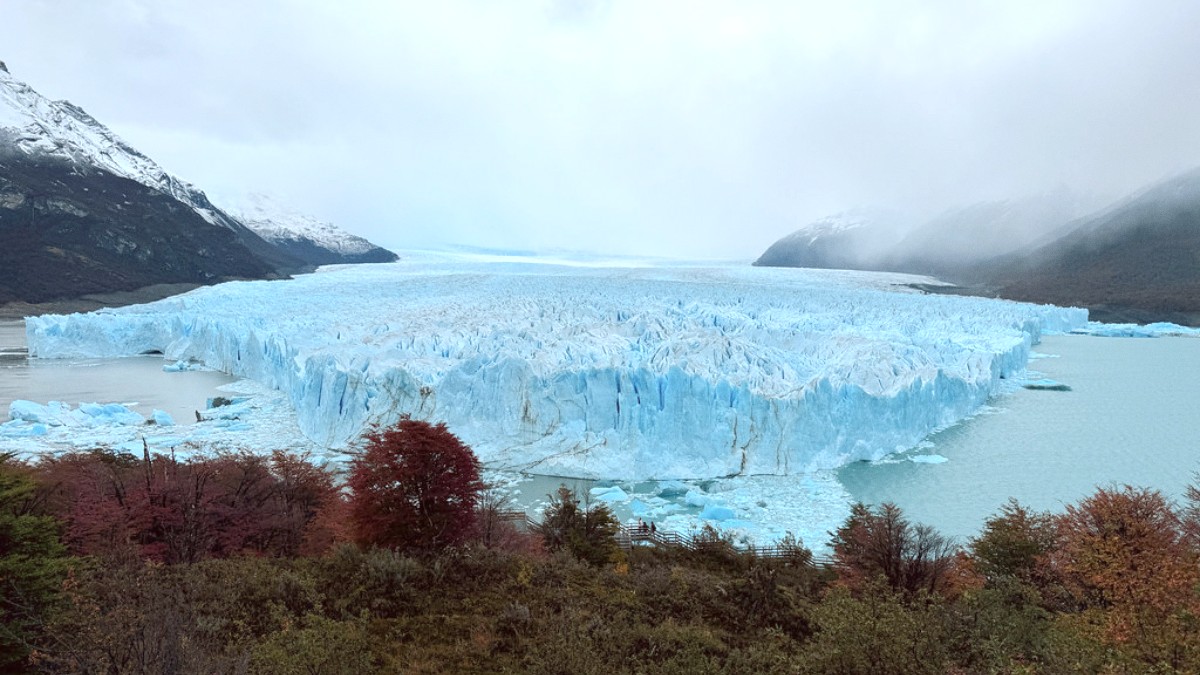
Southern Patagonia, Chile
Patagonian cuisine has deep roots in the region's main industry: sheep farming. This influence shows in the prevalence of lamb dishes. European immigration, specifically from British and German settlers, also added elements to local cooking.
The cold, clear waters of the fjords offer a bounty of seafood, which complements meat-focused dishes. The cuisine is generally hearty and designed to provide warmth and sustenance in a demanding environment.
Dinner typically begins later than in many Western countries, usually around 8:00 PM or 9:00 PM. Lunch frequently serves as the main meal of the day.
A 10% service charge (propina) is customary and often displayed on the bill. One can request its removal if service was unsatisfactory, though this is rare for good service.
Dining in Puerto Natales is generally casual. Even in more upscale establishments, smart casual attire suffices. Formal wear is not needed. For popular restaurants, especially during high season, securing a reservation for dinner is beneficial.
A quintessential Patagonian experience. A whole lamb slow-roasted over an open fire for hours, yielding incredibly tender, flavorful meat with crispy skin. Find this at estancias or specialized restaurants.
A communal meal, often with simple side dishes.
Puerto Natales is known for its fresh King Crab. It is often served simply, steamed or boiled, allowing its sweet, delicate flavor to shine. Also found in dishes like chupe de centolla (a creamy King Crab gratin).
A local delicacy from cold southern waters.
Merluza Austral (Southern Hake): A common white fish, prepared grilled, baked, or fried. Empanadas: Baked or fried pastries with various fillings; a Chilean staple. Look for de pino (minced meat, onion, egg, olive) or de queso (cheese).
Empanadas are the most common street food here.
A refreshing dessert featuring the local calafate berry.
Sweet, sandwich-like cookies filled with dulce de leche (caramelized milk) and sometimes coated in chocolate or powdered sugar.
For a special meal, Puerto Natales presents a few upscale options that combine refined Patagonian ingredients with modern culinary techniques. Restaurants within luxury hotels like The Singular Patagonia, or standalone places like Afrigonia, fit this category.
This category features the most choices, balancing quality, atmosphere, and price. You will discover many restaurants serving traditional Chilean fare, fresh seafood, and some international dishes.
Picadas: Small, unpretentious local cafes offering affordable, hearty set lunches ("menú del día"). Empanada Shops: Numerous small shops sell freshly baked or fried empanadas for a quick, inexpensive meal or snack. Supermarkets: For the tightest budget, purchasing groceries and self-catering in your accommodation's kitchen offers the most economical option.
Most mid-range and fine dining restaurants now feature at least one or two vegetarian dishes. Vegan options can be more limited but are increasingly available. Gluten-free (sin TACC) and other allergy awareness is growing, but not universal. Communicate your needs clearly.
Look for clearly labeled menus.
Halal and kosher options are extremely limited due to small community sizes. Travelers with these dietary requirements should plan to self-cater or bring specific foods. Carry a small card with dietary restrictions clearly written in Spanish. Use apps like HappyCow or online forums for specific recommendations. Self-catering offers the most control.
Self-catering offers maximum control.
Some operators may offer Patagonian cooking classes focusing on local ingredients.
Traditional estancias near Puerto Natales offer tours culminating in a Cordero al Palo lunch.
Check local event calendars for occasional food festivals or markets.
Clarify portion sizes; some Patagonian dishes are quite generous. One dish may be sufficient for two people, especially after a long day of activities.
Consider sharing to experience more dishes.
If planning multiple courses, ask your server about typical portion sizes to avoid over-ordering. Many local restaurants are accustomed to travelers inquiring about this.
Meal planning can prevent food waste.
While less prevalent for direct bookings in Puerto Natales, some higher-end establishments may use global reservation platforms.
Upon arrival, check with your accommodation or the local tourism office for updated dining guides or recommendations.
Patagonian lamb, especially Cordero al Palo, is the region's culinary emblem. Its rich flavor and tender texture result from traditional slow-roasting methods.
The cold waters surrounding Puerto Natales offer fresh seafood. King Crab (Centolla) is a highly valued delicacy, frequently prepared simply to highlight its natural sweetness.
The local cuisine embraces robust, savory flavors. Cooking methods like roasting and grilling are common, allowing the quality of the main ingredients to take precedence.
Dinner typically starts later, usually around 8 PM or 9 PM, aligning with local customs.
Plan accordingly or enjoy lighter snacks beforehand.
A 10% service charge (propina) is customary and often included on the bill.
This is standard for good service.
Explore upscale restaurants for special occasions and a wide array of mid-range eateries for daily meals.
Discover "picadas" for economical set lunches and numerous empanada shops for quick, inexpensive bites.
Visit the Municipal Market for local produce and casual food stalls, offering an authentic local experience.
Engaging with the local food scene deepens your travel experience. Patagonian flavors are hearty, reflecting the region's climate and heritage.